A computer platform is a combination of hardware and an operating system, like the Macintosh, an Intel PC running Windows, or a Sun computer running Unix. Various computer languages run on a given platform, from the lowest-level native machine language, through assembly languages and compiled languages like C and C++, to today's fourth-generation interpreted and scripting languages, like Java and JavaScript.
A platform always has an input-output system (BIOS) and user interface (UI), a system bus, central processing logic, and data storage, volatile RAM and longer term storage like hard disks. All disk operating systems offer file management - directories/folders, etc.
theSky is a virtual platform whose hardware is the connected computers of the Internet. Its BIOS is the web browser. Its bus is implemented via TCP/IP, which moves data from the browser to the web server, where a web application runs on the server hardware. theSky is a multiprocessor computer, using the CPUs and short-term memory of both the browser computer and the server computer. theSky long-term data storage is a combination of relational database management system (RDBMS) and the web server files. Its file management system is implemented as a directory tree structure in the browser called skyFinder.
Software for theSky, partitioned between the browser and server, is called webWare. When it uses our open relational database model (ODBM), we call it skyWare.
theSky data storage takes advantage of ODBM and the standard SQL query language. It stores data as entities and attributes, human-readable text strings and numbers, very-high-level structures compared to the bits and bytes of a PC.
theSky user interface is built from today's browser tools (HTML, JavaScript, Java, XML, Flash, etc.), limited compared to the graphical interface of today's powerful PCs, but capable enough to support a large number of applications. And a large number of browsers can be connected simultaneously to a skyServer.
This combination of multiple browsers and the scalability of the RDBMS makes theSky virtual platform a multi-user computer system, not a personal computer. We call it a community computer. It is not a PC, but a CC.
Top of Glossary
Web-based software or "webWare"
"Web-based" software or "webWare" usually describes software that runs distributed between the browser and the web application server. This webWare runs entirely in "virtual machines" and is generally in a scripting language, like JavaScript or VB Script, or an interpreted language like Java. The virtual machine allows it to execute on the particular hardware platform.
Distributing or "partitioning" the webWare between the browser and the web application server optimizes performance across the network connection.
Web-based software is said to be "abstracted" from the particular hardware or operating system on which it is running. As long as an OS provides high-quality virtual machines and implements the standard Internet protocols, and as long as the browser supports the scripting languages, then webWare will run properly on this distributed "virtual platform" that we call theSky. When the webWare is a "three-tier" system working with a relational database backend conforming to our open database model (ODBM) and the skyBuilders programming API, we call it skyWare.
Some of the major webWare applications are e-commerce sites, email-based groupware, calendar/scheduling services, web publishing, web file sharing, as well as huge enterprise information systems which are all being web enabled. skyBuilders has a couple of dozen more applications in the design pipeline, some of which are conventional desktop applications, like accounting.
Web Publishing
"Web Publishing" is also known as Content Management or Knowledge Management. Major features include scheduling content onto the web, searching all page files, infinite undo and backups, and archiving all pages to preserve institutional memory. Documents need not be HTML web pages, but today the majority of documents in a web-based publishing system are in HTML or XML formats.
Top of Glossary









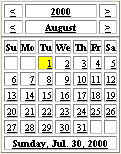
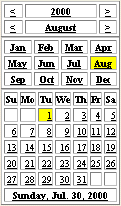
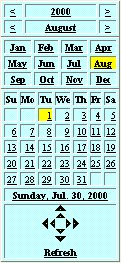
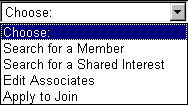
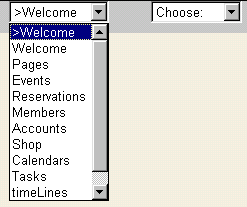

 The persistent archive shows all versions of the skyPage before the current version of the page.
The persistent archive shows all versions of the skyPage before the current version of the page.




